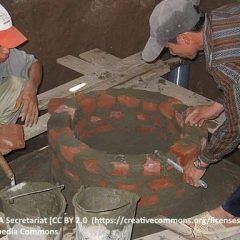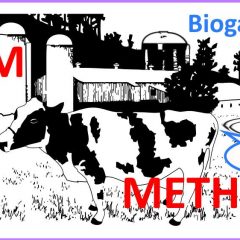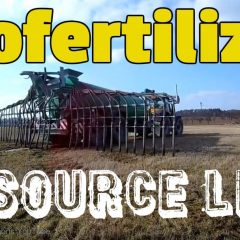Anaerobic Digestion Techniques Technologies and Innovations – Why All AD Plants are Different!
In this article we introduce the scope of the many Anaerobic Digestion process techniques. Here we highlight the three very different purposes for which technologies have been developed to replicate “the stomach”. That’s before we categorize the techniques used to produce the required plant outputs. This information is important intermediate level training, for students of anaerobic […]
Advantage of Anaerobic Digestion for Land Carbon Storage (Committee on Climate Change)
For those who are interested in the development of biogas technology, a new advantage of anaerobic digestion for Land Carbon Storage is beginning to emerge from recent work on the policy changes needed by the UK government to reduce global warming, by the UK’s Committee on Climate Change (CCC). To some, this might seem to […]
Silage Clamps – Planning and Building a New Silage Clamp
Silage clamps are so often hidden away and neglected, and yet they are vital part of every agricultural biogas plant. The storage of forage stocks (silage) is vital for those times in every year when AD feedstocks are in short supply from other sources. Undoubtedly, the average farm business should pay them more attention, especially since […]
4 Biogas Digester Facts Everyone Can Benefit From
The term “biogas digester” can describe any anaerobic digestion process. It is most associated historically with the brick built types of buried fixed Dome Biogas Digester. This type of biogas digester is very common in many developing nations, but new types of plants, can be much better. So, here are four Biogas Digester facts you […]
Advantages of Biomethane Gas to Grid AD Plants
In this article we will explain the advantages of biomethane gas to grid AD plants, but before we start on that, we thought we would be sure to bring all readers along with us by explaining what we mean by “gas to grid” anaerobic digestion plants. The difference between a “gas to grid” biogas plant and a […]
Biogas Information – The Latest Renewable Methane Sustainable Energy Info
We have compiled this page as a mine of biogas information for our readers. If we have omitted information you wanted, about what is essentially the “anaerobic digestion process”, please comment. Tell us about it, and we will do our best to give you the answer! How is Biogas Made? Biogas is produced through anaerobic […]
Digestate Spreading – Best Practise Equipment and Application
In this article on Digestate Spreading we have brought together the most authoritative information on the best practice, the equipment, and the application of digestate. We start with a definition of what digestate spreading is, and we go on to cover digestate produced to PAS110 Quality Protocol standard. That’s followed by the best practice from […]
2 Farm Methane Types One Intended and One is an Unintentional Byproduct
Farm methane for so long a neglected part of farming, is a subject which is becoming ever more popular as the word about the energy, and waste management benefits get out! There are two ways in which farm methane is produced, as follows: Methane Unintentionally Produced on the Farm: Methane produced in purpose-built and operated biogas-digesters (anaerobic […]
The Advantages of Biogas
The advantages of biogas are many. Among the greatest advantages are that the renewable energy produced, substitutes fossil fuels and thus reduces the emissions of greenhouse gases. Plus, it does it at a cost much lower than by most other techniques. In addition to the multiple renewable energy advantages of biogas are the soil fertilizer and […]
3 Biogas Digester Lessons You Can Benefit From Today
A biogas digester is required to make biogas. A biogas digester (anaerobic digestion plant) is a sealed container holding water and bacteria, which is fed organic matter to be broken down, and which collects the resultant biogas. The biogas is tapped off from an inverted drum or plastic membrane collector, either to a collector for […]
Biofertilizer Resource List – It’s a Must-Have!
Biofertilizer (or in the UK Biofertiliser) will become a major source for plant fertility in agriculture in the future*. That’s why we have compiled this resource page, defining biofertilizer and listing topics of importance re: biofertilizer and diBiofertiliser (the name for “digestate biofertilizer”). A major benefit of biofertilizers comes from the presence of “plant-growth promoting rhizobacteria” (PGPR) […]













